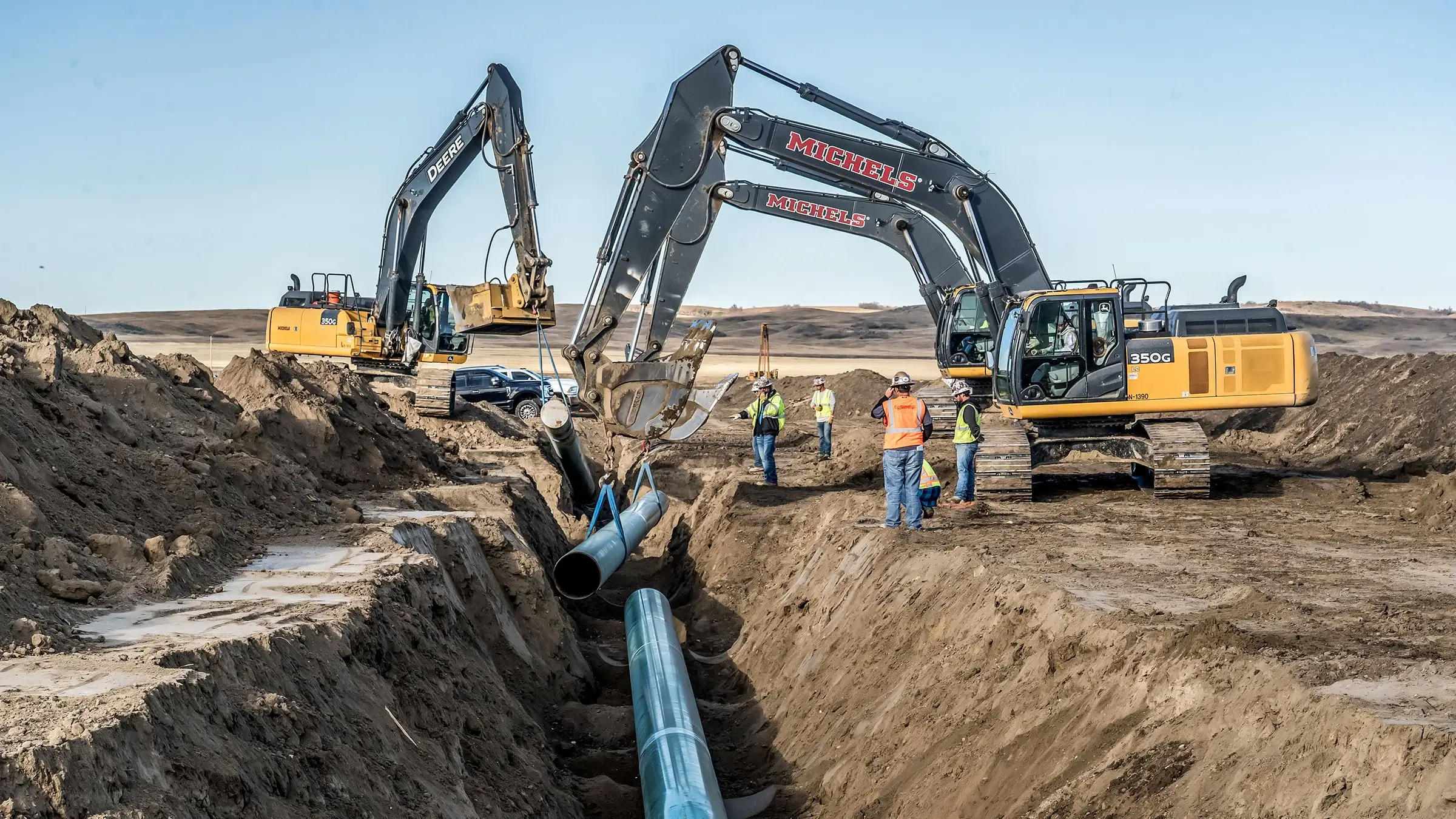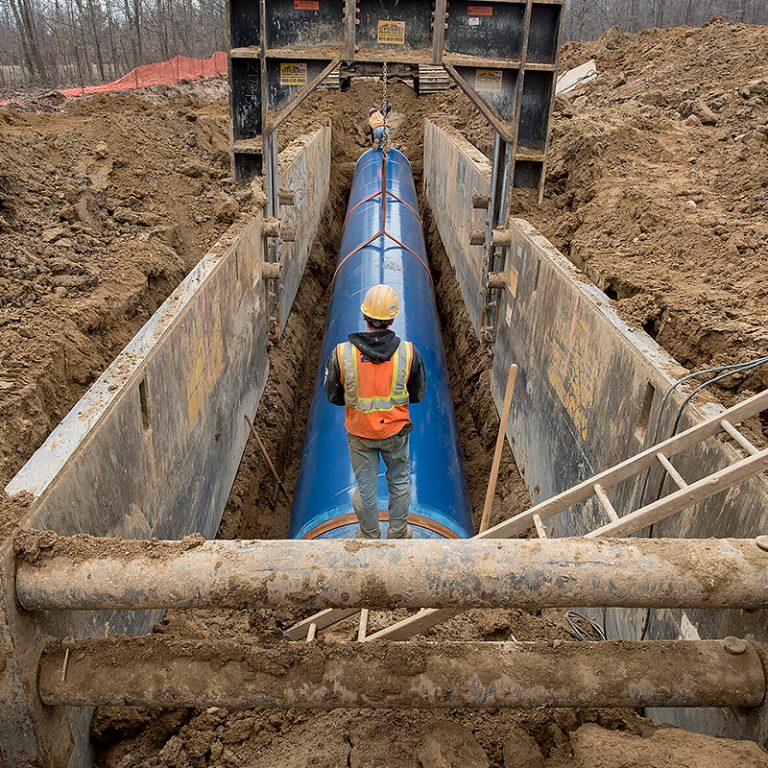The Risks of Self-Installing Without Help From Creek Pipe Company
Wiki Article
What You Ought To Understand About Pipe Trenching Providers: A Comprehensive Overview of Available Options
Pipe trenching solutions are vital for the installment and maintenance of underground utilities. They entail different approaches customized to details needs and atmospheres. Understanding these methods is essential for reliable project execution. Each option provides its own collection of benefits and difficulties. As the demand for reliable utility management boosts, knowing what to think about when choosing a trenching service comes to be necessary. What factors should one focus on to guarantee success?Recognizing Pipe Trenching: What It Is and Why It Matters
Although often overlooked, pipeline trenching is an important process in various construction and utility jobs. This technique involves digging deep into slim trenches to facilitate the installment of pipelines for water, gas, sewer, and telecoms. The value of pipe trenching exists in its function in guaranteeing that these crucial systems are correctly incorporated right into facilities, enabling the safe and reliable shipment of needed services.Proper trenching is vital for preserving the integrity of pipes and minimizing dangers related to soil erosion and collapses. It additionally permits effective evaluations and maintenance of underground utilities. In addition, recognizing the regional policies and ecological considerations is important, as incorrect trenching can cause pricey delays and lawful issues. Eventually, pipe trenching works as the foundational step that supports numerous construction endeavors, making it a considerable facet of modern infrastructure advancement.
Typical Trenching Approaches for Below Ground Utilities
In the domain of below ground energies, numerous trenching methods play a vital function in installment and maintenance - Creek Pipe pipeline construction. The open-cut trenching approach, directional monotonous method, and hydro excavation process each deal distinct advantages depending upon the particular task needs. Understanding these approaches is necessary for efficient and reliable energy administrationOpen-Cut Trenching Method
Open-cut trenching is a widely made use of method for setting up underground energies, particularly when the depth and width of the trench enable efficient access. This technique includes excavating a trench along the proposed path of the utility, offering straight presence and ease of access for installment. It is especially helpful for tasks that require comprehensive excavation, as it helps with quick installment and inspection. Nonetheless, it likewise necessitates careful planning to minimize disruption to the surrounding location, consisting of traffic and existing structures. Open-cut trenching is most efficient in open spaces where the dirt problems agree with, however it might be limited in city atmospheres as a result of the presence of existing utilities and various other underground obstacles.Directional Boring Technique

Hydro Excavation Refine
Just how does hydro excavation stick out among common trenching methods for underground utilities? Hydro excavation makes use of high-pressure water and vacuum cleaner innovation to safely get rid of soil, enabling precise excavating around delicate underground energies. This method minimizes the danger of damaging existing infrastructure compared to typical mechanical excavation. By using water to loosen the soil, hydro excavation offers a less invasive method, decreasing the capacity for dirt compaction and ensuring a cleaner worksite. In addition, the process improves presence throughout excavation, boosting total accuracy and efficiency. Hydro excavation is especially useful in urban locations where energy lines are densely loaded, making it a recommended choice for professionals concentrated on safety and security and accuracy in underground projects.Benefits of Trenching Solutions
While different techniques exist for mounting below ground energies, trenching services use unique benefits that make them a recommended option for several tasks. One substantial benefit is the cost-effectiveness of trenching, as it commonly calls for less specialized devices compared to options like hydro excavation. This typically leads to reduced labor and functional prices. Furthermore, trenching can accommodate a large variety of utility kinds, including water, sewage system, and gas lines, giving adaptability for contractors.Moreover, trenching enables effective access to numerous lines in a single excavation, lessening disturbance to the surrounding area. The procedure additionally enables exact installment and fixing, which is crucial for sticking to regulatory criteria and ensuring lasting integrity. Eventually, trenching can be implemented relatively quickly, reducing project timelines and enabling for faster solution repair. These benefits jointly make trenching services a sensible choice for several underground utility projects.Disadvantages and Difficulties of Trenching
Regardless of the numerous benefits of trenching solutions, there are remarkable downsides and difficulties that need to be considered. One considerable obstacle is the possibility for soil instability, which can bring about cave-ins, positioning risks to employees and equipment. Additionally, trenching can interrupt existing utility lines, demanding careful preparation and coordination to avoid service interruptions. The procedure can also be taxing, particularly in urban areas where room is minimal and accessibility is limited. Trenching may need extensive permits and governing compliance, adding complexity and prospective hold-ups to projects. Environmental issues, such as soil disintegration and damage to neighborhood ecosystems, can arise from Creek Pipe contact improper trenching methods. Ultimately, the prices connected with trenching, consisting of labor and equipment, can escalate if unexpected problems develop throughout the task, making it essential for stakeholders to consider these obstacles against the advantages when considering trenching solutions.Trick Factors to Take Into Consideration When Choosing a Trenching Service
Picking the appropriate trenching service can significantly influence the success of a job. Numerous key elements need to be analyzed to assure an appropriate choice. Initially, the firm's experience and competence in trenching operations are crucial; a reputable solution with a strong performance history is generally much more trusted. Next, evaluating the devices used is essential, as modern machinery can improve performance and accuracy. In addition, it is significant to take into account the array of services provided, consisting of excavation deepness and dirt type handling, to verify they meet particular task requirements.Another variable to testimonial is the company's online reputation; customer reviews and reviews can provide insights right into previous efficiency. Getting in-depth quotes that outline prices and timelines will aid in budget plan administration. Finally, confirming conformity with local policies and sector criteria is critical for staying clear of potential legal issues. By assessing these variables, clients can make an informed choice when choosing a trenching service.Precaution in Pipe Trenching
In pipeline trenching, precaution are crucial to guaranteeing worker defense and website integrity. Key components consist of making use of personal protective devices, detailed excavation website evaluations, and well-defined emergency reaction protocols. Executing these actions substantially decreases dangers related to trenching procedures.Individual Safety Equipment
Security in pipeline trenching greatly relies on the proper usage of individual safety equipment (PPE) Workers ought to wear construction hats to safeguard versus dropping items, in addition to high-visibility vests to enhance their exposure on-site. Steel-toed boots are vital for foot defense versus hefty devices and products. Additionally, handwear covers are necessary for hand safety, specifically when managing harsh or sharp things. Respirators might also be necessary in settings with dirt or unsafe fumes. Eye defense, such as security goggles, ought to be used to secure against debris. Hearing defense is essential in loud job environments. By sticking to PPE standards, employees can greatly decrease the danger of injury and ensure a safer trenching procedure.Excavation Website Inspection
Properly examining the excavation website is a fundamental step in ensuring a safe pipeline trenching procedure. This procedure involves assessing the website for prospective dangers such as below ground energies, unsteady soil conditions, and close-by frameworks. A complete assessment enables for the recognition of dangers that can compromise worker safety. Additionally, validating the soil kind and dampness degrees can help establish ideal shoring approaches to avoid trench collapses. It is important to guarantee that the site is free from debris which correct signage is shown to signal personnel of continuous procedures. Routine evaluations throughout the job can additionally aid detect any kind of changes in website conditions, allowing prompt changes to precaution and job protocols.
Emergency Action Protocols
Emergency action methods are essential in mitigating threats related to pipe trenching operations. These protocols guarantee that all employees are prepared to act promptly and effectively in emergencies. Crucial element consist of normal safety drills, clear interaction channels, and designated fire escape. Additionally, first-aid kits and emergency get in touch with numbers need to be conveniently obtainable on-site. Trenching operations need to likewise consist of procedures for managing dangerous situations, such as cave-ins or energy strikes. Training employees on identifying prospective risks and understanding their roles during an emergency situation is important. Maintaining an updated website safety plan can substantially enhance response performance. Overall, effective emergency preparedness cultivates a much safer working atmosphere and decreases the impact of unexpected events.Cost Factors To Consider for Trenching Solutions
Comprehending the financial implications of trenching services is important for project planning and budgeting. The expenses related to trenching can differ commonly based on a number of variables, including task size, soil kind, and deepness of the trench. Labor expenses frequently stand for a substantial portion of the overall cost, as proficient drivers are necessary for effective implementation. In addition, equipment leasing charges can contribute to the overall budget, especially for specialized machinery.Site access is an additional vital factor; difficult surface might require added resources, raising expenses. Allowing and governing conformity can additionally contribute to expenditures, specifically in metropolitan locations where guidelines are stringent.Lastly, unanticipated issues, such as coming across existing energies, can bring about unforeseen expenses and hold-ups. Therefore, getting comprehensive price quotes from trustworthy trenching provider is important for accurate budgeting and ensuring effective task completion.Often Asked Questions
For how long Does a Regular Pipe Trenching Job Take?
The period of a common pipeline trenching task differs significantly based on aspects such as deepness, soil problems, and job intricacy. Normally, it can take anywhere from a couple of days to a number of weeks to finish.What Equipment Is Typically Utilized in Pipe Trenching?

Exist Environmental Laws for Trenching Activities?
Environmental laws for trenching tasks commonly call for compliance with local, state, and federal standards. These laws intend to decrease eco-friendly disruption, secure water resources, and assurance correct waste administration throughout excavation and installment procedures.
Can Trenching Providers Be Incorporated With Other Building Jobs?
Trenching solutions can undoubtedly be integrated with various construction tasks. By coordinating initiatives, performances can be accomplished, reducing disruptions while guaranteeing that all needed infrastructure work is finished in a prompt and cost-efficient fashion.
What Are Typical Soil Keys In Experienced in Trenching?
Typical soil types come across in trenching include clay, sand, silt, and loam. Each type presents distinct difficulties, affecting excavation techniques and stability, necessitating careful preparation to guarantee safe and reliable trenching operations.Report this wiki page